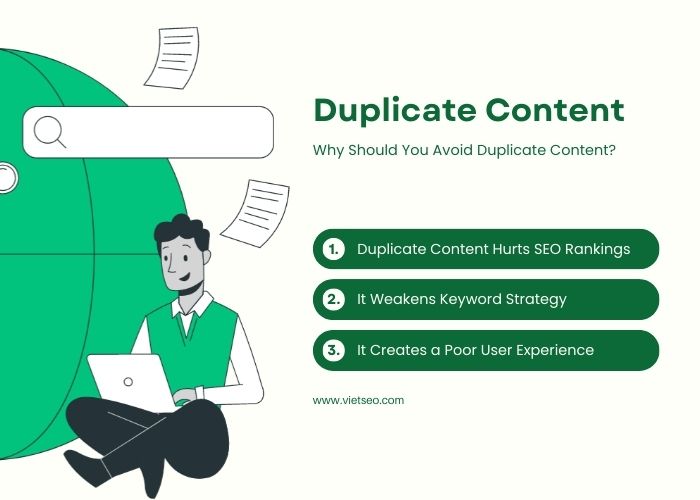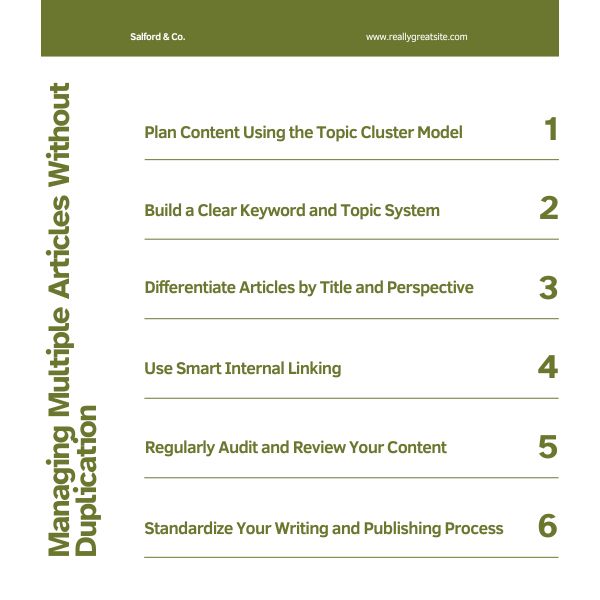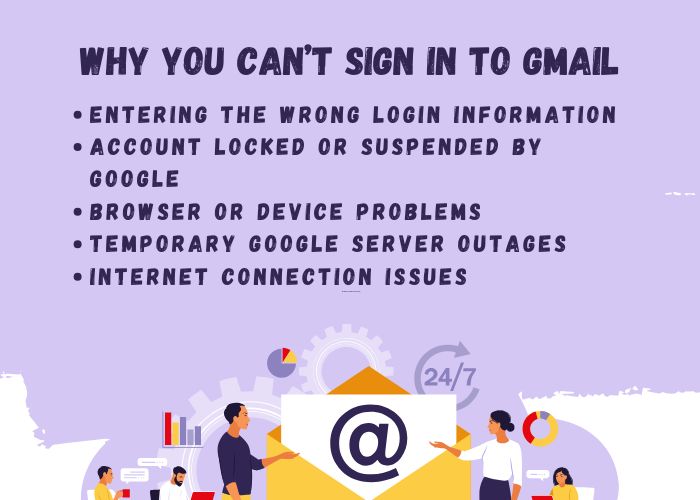Guide to Managing Multiple Articles Without Duplicate Content | Viet SEO
Why Should You Avoid Duplicate Content?
Before learning how to manage multiple articles effectively, it’s important to understand why duplicate content is such a big deal. At Viet SEO, we’ve seen how overlooked duplication can quietly damage a site’s visibility and overall performance. Search engines get confused, rankings become diluted, and readers lose trust in your site. Addressing this problem early is essential if you want to build a strong, sustainable SEO foundation.
1. Duplicate Content Hurts SEO Rankings
Search engines like Google prioritize originality. Their algorithms are designed to reward fresh, valuable content that delivers unique insights. If Google discovers too many pages on your site with nearly identical text, a few things can happen:
- Rankings for those pages may drop significantly.
- Some of your pages might not get indexed at all, meaning they’ll never show up in search results.
- In extreme cases, the entire site could be penalized for appearing manipulative or spammy.
Instead of lifting your site up, duplicate content can drag your whole domain down.
2. It Weakens Keyword Strategy
Imagine you publish five different articles all targeting the same keyword but without a clear plan. Instead of reinforcing your authority, those articles end up competing with each other. This problem is called keyword cannibalization.
When this happens, Google struggles to decide which page is the “main” one, so it may rank none of them well. As a result, your keyword efforts get scattered instead of concentrated—wasting both time and potential traffic.
3. It Creates a Poor User Experience
Duplicate content doesn’t just frustrate search engines—it frustrates people too. When visitors click around your site and keep running into articles that repeat the same information, they may feel bored, confused, or even misled. That lack of trust can quickly drive them away.
Users today expect clear, reliable, and engaging content. If they can’t find it on your site, they’ll have no hesitation leaving for a competitor who provides a better experience.
Common Causes of Duplicate Content
Before you can fix duplicate content, you need to understand where it comes from. In our experience at Viet SEO, duplication often isn’t intentional—it usually happens because of gaps in content planning, technical setup, or the way content is published across a site. By identifying these common causes, you can take practical steps to build a cleaner, more optimized website.
1. Rewriting the Same Topic Too Many Times
When multiple writers contribute to a site without a clear editorial strategy, it’s easy to end up with several articles covering nearly identical topics. Even small overlaps in subject matter can confuse search engines, making it unclear which page should rank.
2. Unclear Keyword Targeting
Keywords often have different variations and user intents. Without a well-defined keyword map, teams may create separate articles targeting similar phrases—resulting in overlapping content. For example, “best SEO tools” and “top SEO software” could accidentally become two nearly identical posts competing with each other.
3. Copy-Pasted Product Descriptions or Introductions
This issue is especially common in e-commerce. Many stores rely on supplier-provided product descriptions or reuse the same introductory text for multiple products. While it saves time, this practice creates widespread duplication that can damage SEO performance and make your site look generic.
4. Technical and Structural Problems
Sometimes, duplicate content doesn’t come from writers at all—it’s caused by technical setup:
- Multiple URL versions (e.g.,
wwwvs.non-www, orhttpvs.https). - Dynamic URLs that generate the same content under different query strings.
- Category and tag pages that pull in the same content in slightly different formats.
- Print-friendly versions of articles creating near-identical duplicates.
These technical issues are easy to overlook but can significantly dilute your site’s authority if left unresolved.
Guide to Managing Multiple Articles Without Duplication
1. Plan Content Using the Topic Cluster Model
One of the most effective ways to manage large volumes of content without running into duplication issues is by using the topic cluster model. Instead of creating random standalone articles, you organize your content around one pillar topic—a broad, comprehensive guide that serves as the central hub—and then create multiple cluster articles that cover specific subtopics in greater depth.
For example:
- Pillar Topic: SEO for Beginners
- Cluster Articles:
- How to Do Keyword Research Effectively
- What Is On-Page SEO?
- What Are Backlinks and How to Build Quality Ones
- Technical SEO: Key Elements to Watch
In this structure, the pillar article gives readers a complete overview of the main subject, while the supporting cluster articles break down smaller aspects in detail. Each cluster is optimized around a unique keyword and links back to the main pillar. At the same time, the pillar article links out to the clusters, creating a strong internal linking system.
This model not only makes your site easier to navigate but also prevents overlap between articles, since each piece has a clearly defined focus. It’s the same method VietSEO often applies when building out content strategies for clients with large websites, ensuring their SEO growth is sustainable over the long term.
2. Build a Clear Keyword and Topic System
A solid keyword and topic system is your best defense against duplication. Before drafting a single article, spend time building a content roadmap that includes:
- Primary keywords for each article (the main ranking target).
- Secondary keywords that support the primary keyword and add topical depth.
- Article goals—is the content meant to educate, convert, or attract backlinks?
- Planned internal links, both to the pillar page and to related cluster articles.
- Cross-references to related articles, so you don’t accidentally cover the same ground twice.
To make this process smoother, use planning and SEO research tools. For keyword research and duplication checks, tools like Google Keyword Planner, Ahrefs, or SEMrush are extremely useful. For workflow management, platforms such as Notion, Trello, or Google Sheets help you map out and track every piece of content in your pipeline.
When done properly, this system gives your team a big-picture view of the entire content landscape. Everyone knows what’s already been covered, what’s planned next, and how each piece connects to the larger strategy—making it much easier to scale content production without repeating yourself.
3. Differentiate Articles by Title and Perspective
Even when writing about the same product, you can approach it from different angles:
| Article Title | Perspective |
|---|---|
| Product A Review | Personal review |
| How to Use Product A Effectively | How-to guide |
| Comparing Product A and B | Comparative review |
| Pros and Cons of Product A | In-depth analysis |
By varying the article’s purpose, you avoid duplication and offer more value to readers.
4. Use Smart Internal Linking
Internal linking is one of the simplest yet most powerful techniques to keep your website’s content organized and search-engine friendly. When done strategically, it helps Google understand how different articles relate to each other while also distributing SEO authority (often called link juice) across your site.
To make the most of it:
- Ensure every article links to other relevant articles, not just the pillar page.
- Use natural and varied anchor texts—avoid repeating the same keyword-rich phrase every time, as this can look manipulative.
- Think of internal links as a way to guide your readers deeper into your site, improving both SEO and user experience.
5. Regularly Audit and Review Your Content
Even the best content strategy can’t run on autopilot forever. Over time, topics overlap, articles get outdated, and keyword priorities shift. That’s why a content audit is essential every few months (ideally once per quarter or at least twice a year).
During each audit, you should:
- Identify and fix duplicate content or cases of keyword cannibalization (when multiple articles compete for the same keyword).
- Decide whether outdated articles should be merged, deleted, or redirected (301).
- Refresh old posts by updating statistics, improving structure, or re-optimizing keywords to keep them competitive.
Helpful tools for audits include:
- Screaming Frog – crawl your site and detect duplicate titles, descriptions, or thin content.
- Ahrefs – monitor keyword rankings and uncover cannibalization issues.
- Google Search Console – track performance, impressions, and spot drops in visibility.
6. Standardize Your Writing and Publishing Process
If you’re producing content as part of a team—or outsourcing to freelancers—consistency is key. Without a standardized process, you risk duplicate content, uneven quality, and wasted time.
A strong process should include:
- SEO content templates that outline structure, formatting, and optimization guidelines.
- A duplication check step using tools like Grammarly, Copyscape, or Plagiarism Checker before publishing.
- A final editor or reviewer who ensures every piece meets your quality, style, and SEO standards.
By setting clear rules and workflows, you make it easier for your team to scale content production without sacrificing quality or risking duplication penalties.
Recommended Tools for Effective Content Management
To manage large volumes of content without compromising quality, use tools for support. Based on experience from Viet SEO agency, platforms like content calendars, duplicate content checkers, and keyword tracking tools are essential for maintaining structure, consistency, and SEO performance across your website.
| Tool Name | Use Case |
|---|---|
| Notion / Trello | Planning and workflow management |
| Google Sheets | Keyword tracking and article status |
| Ahrefs / SEMrush | Keyword research and duplication check |
| Grammarly / Quillbot | Error checking and rephrasing |
| Screaming Frog | Website structure analysis |
| Google Search Console | SEO performance monitoring |
Conclusion
Managing a large number of articles on a website is no easy task. However, with the right strategy, proper website Maintenance, and supporting tools, you can maintain high-quality content and avoid duplication effectively.
Key Takeaways:
- Always plan content before writing
- Focus on Topic Cluster strategy and smart internal linking
- Check for duplication regularly and audit content periodically
- Create a clear workflow for both individuals and teams
By applying the guidance in this article, you'll not only avoid duplicate content but also improve your content quality, enhance SEO, and build a more loyal audience.




